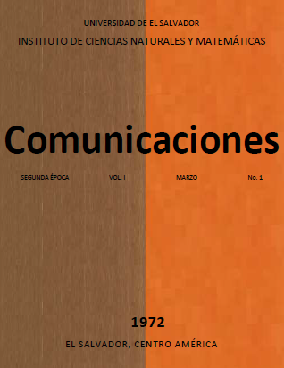Estudios de campo con ácido fosfonico 2-cloroetilo (Ethephon) en cafetos.
Palabras clave:
Ácido fosfórico 2-cloroetilo Ethephon, Coffea arábica L, Coffea robusta L., CafetosResumen
En este trabajo se demuestra que el compuesto ácido fosfórico 2-cloroetilo (Ethephon) tiene algunos efectos notables en uniformar la maduración del fruto en los cafetos y en aumentar su tamaño. Se utilizó el Coffea arabica L. cultivar Bourbon. En la especie Coffea robusta L. el ethephon ocasionó una defoliación y caída del fruto excesiva en concentración tan baja como 100 partes por millón. Se obtuvo la mayor uniformidad del fruto (85-95 por ciento) en café al sol con unas 500 partes por millón de ethephon y con 750 partes por millón con café a la sombra. La defoliación y la caída del fruto estuvo dentro de límites aceptables. Se observó un aumento en el tamaño del fruto solamente cuando se aplicó el ethephon en la segunda fase de crecimiento, mientras que la mayor uniformidad en la maduración se consiguió aplicando ethephon temprano en la tercera fase de la curva de crecimiento del fruto. El ethephon demuestra un gran potencial en el cultivo de café permitiendo que los caficultores realicen una sola cosecha y aumentando el tamaño de la uva.
Descargas
Referencias
Alvim, P., "Estímulo de la floración y fructificación del cafeto por aspersiones con ácido giberélico". Turrialba, Costa Rica. 8: 64-72. 1958.
Byers, R. T. "Effect of growth regulators on peach fruit growth and maturation".Ph. D. thesis, Purdue University. 1970.
Russo, Louis Jr. ; H. C. Dostal y A. C. Leopold, "Chemical Regulation of Fruit Ripening". Bioscience 18: 109. 1968.
Russo, Louis Jr.; H. C. Dostal y P. E. Nelson, "Effects of Chemically Stimulated Ripenig of tomate fruits on Processed Quality". Hort. Science. En prensa. 1972.
Wormer, T. M. "The growth of the coffee berry". Ann. Bot. Lond. 28: 47-55. 1964
Descargas
Publicado
Número
Sección
Licencia

Esta obra está bajo una licencia internacional Creative Commons Atribución-NoComercial 4.0.






